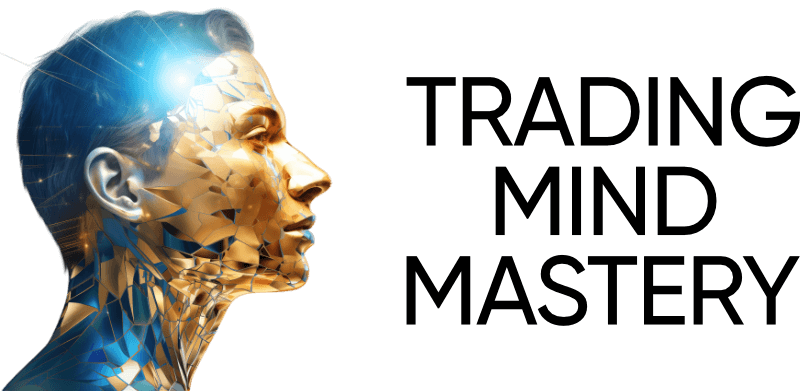Have you ever felt the rush of adrenaline when making a trading decision, unsure of whether it would bring profit or loss? I certainly have. As a trader, the thrill of the market can be both exhilarating and daunting. But what if there was a way to refine your trading strategy and gain valuable insights into the market without risking real money?
Enter the world of Practicing Trading Simulation. In this comprehensive guide, we will explore how simulation tools can help you enhance your trading skills and make more informed decisions. Whether you are a beginner looking to learn the ropes or an experienced trader seeking to fine-tune your strategies, practicing trading simulation is a powerful tool at your disposal.
Through the use of simulation tools, you can create a risk-free environment where you can practice executing trades, analyze market trends, and evaluate the success of your strategies. It’s a chance to develop your trading skills, build your confidence, and gain a deeper understanding of the complexities of the market. With simulation, you can make mistakes, learn from them, and refine your approach before ever putting real money on the line.
So, if you’re ready to take your trading journey to new heights, join me as we embark on this exciting exploration of Practicing Trading Simulation. Let’s unlock the potential of simulation tools together and discover how they can revolutionize your trading experience.
Understanding the Importance of Learning to Trade
Before diving into the world of practicing trading simulation, it’s crucial to recognize the significance of learning to trade and the role that trading psychology plays in successful trading. Building a strong foundation in trading knowledge and understanding the psychological aspects that influence trading decisions are essential for becoming a skilled trader.
Learning to trade equips you with the knowledge and skills needed to navigate the complexities of the financial markets. It involves studying different trading strategies, technical and fundamental analysis, risk management techniques, and market dynamics. By gaining a thorough understanding of these key pillars, you will be better equipped to make informed trading decisions.
However, trading is not just about numbers and charts; it’s also about managing your emotions and maintaining discipline. This is where trading psychology comes into play. The ability to control emotions such as fear and greed, and to make rational decisions even in high-pressure situations, is crucial for success in trading.
Trading psychology is the study of how our emotions, thoughts, and mental states impact our trading performance. It involves understanding the cognitive biases that influence our decision-making process and finding ways to overcome them.
Developing a strong trading psychology requires self-awareness, discipline, and the ability to manage risk effectively. By mastering your emotions and maintaining a disciplined approach, you can avoid common trading pitfalls and make objective trading decisions based on your trading plan.
The Role of Trading Psychology
Trading psychology plays a crucial role in shaping your trading behavior and outcomes. It helps you understand your own biases, emotional triggers, and habits that can either empower or hinder your trading success. By developing a resilient and disciplined trading mindset, you can overcome the challenges posed by fear, greed, and impulsive behavior, and make rational trading decisions.
- Emotional Control: Emotional control is a key aspect of trading psychology. It involves managing emotions such as fear, greed, and frustration that can cloud judgment and lead to irrational trading decisions. By learning to control your emotions, you can make objective and rational trading choices.
- Patience and Discipline: Trading requires patience and discipline. It is essential to stick to your trading plan and not succumb to impulsive trading decisions. By practicing discipline, you can avoid overtrading and maintain consistency in your trading approach.
- Risk Management: Trading psychology emphasizes the importance of effective risk management. It involves setting proper risk-reward ratios, using stop-loss orders, and accepting losses as part of the trading process. By implementing sound risk management practices, you can protect your capital and prevent significant losses.
In conclusion, learning to trade and understanding trading psychology is fundamental to becoming a successful trader. By acquiring knowledge, developing trading skills, and honing your psychological resilience, you can navigate the complexities of the market and make informed trading decisions. In the next section, we will delve into the basics of practicing trading simulation and how it can enhance your learning experience.
Exploring the Basics of Practicing Trading Simulation
Practicing Trading Simulation offers traders the opportunity to refine their skills and develop effective trading strategies without risking real money. In this section, we will provide an overview of what practicing trading simulation entails and guide you through the process of setting up a trading simulator. By the end, you will have a clear understanding of the tools and platforms available and how to use them effectively for skill development.
The Benefits of Practicing Trading Simulation
- Gain experience: Practicing Trading Simulation allows you to gain hands-on experience in executing trades and managing risks. You can explore different trading strategies and analyze their outcomes without the fear of financial loss.
- Experiment with strategies: Simulation tools offer a safe environment where you can experiment with various trading strategies. You can test how different approaches perform in different market conditions and learn from your successes and failures.
- Develop confidence: Through simulation, you can build confidence in your trading abilities. By practicing trading simulation regularly, you will become more comfortable with the trading process and develop a deeper understanding of how markets work.
- Refine skills: Simulation tools provide an opportunity to refine your trading skills, such as technical analysis and risk management. You can hone your abilities and learn to make informed decisions based on market trends and indicators.
Setting Up a Trading Simulator
- Choose a platform: Start by selecting a reliable trading simulation platform that suits your needs. Look for a platform that offers a wide range of markets, realistic pricing, and user-friendly interfaces.
- Create a demo account: Once you have chosen a platform, sign up for a demo account. This account allows you to access the simulation environment and practice trading with virtual money.
- Understand platform features: Familiarize yourself with the features of the trading simulator platform. This includes placing trades, analyzing charts, setting stop losses, and monitoring your performance.
- Define your objectives: Before you start practicing, set clear objectives for what you want to achieve. Determine the specific skills and strategies you want to focus on during your simulation practice.
- Practice regularly: Consistency is key when it comes to practicing trading simulation. Set aside dedicated time each day or week to practice, analyze your trades, and make adjustments to your strategy.
In conclusion, practicing trading simulation is a valuable tool for traders looking to enhance their skills and develop effective trading strategies. By using simulation tools and platforms, traders can gain experience, experiment with different strategies, and develop confidence in their abilities. Setting up a trading simulator involves choosing a reliable platform, creating a demo account, and familiarizing yourself with the platform’s features. Remember to practice regularly and set clear objectives for your simulation practice. Ready to refine your trading skills? Let’s dive into the world of Practicing Trading Simulation!
Harnessing the Power of Mental Training for Trading
Effective mental training is a game-changer for traders, as it directly impacts trading performance and overall success. By focusing on strengthening your mental health and resilience, you can cultivate a resilient trading mind that enhances decision-making abilities and maximizes trading potential.
Mental training for trading involves a range of techniques specifically designed to enhance psychological well-being and optimize trading performance. It equips traders with the necessary tools to navigate the emotional ups and downs of the market, maintain discipline, and make rational decisions under pressure.
Building Mental Resilience
Developing mental resilience is a crucial aspect of mental training for trading. It involves learning to manage emotions, such as fear and greed, and maintaining focus during challenging market conditions. By building mental resilience, traders can avoid impulsive decisions and stick to their trading strategies with confidence.
Mental resilience is not about never experiencing negative emotions, but rather about how quickly you recover from setbacks and regain focus on your trading goals.
Visualizing Success
Visualization is a powerful technique used in mental training for trading. By vividly imagining successful trades and visualizing the desired outcomes, traders can program their minds for success. This practice helps cultivate a positive mindset and boosts confidence, paving the way for optimal trading performance.
Adopting Mindfulness Practices
Mindfulness is another essential aspect of mental training for traders. Mindfulness involves being fully present in the moment, without judgment or attachment to outcomes. By practicing mindfulness, traders can develop self-awareness, manage stress effectively, and make better trading decisions based on a clear and focused perspective.
- Engaging in meditation or deep breathing exercises to enhance emotional regulation and reduce stress levels.
- Practicing gratitude and positive affirmations to foster a positive trading mindset.
- Engaging in physical activities, such as exercise or yoga, to promote overall mental well-being.
By incorporating these techniques into your mental training routine, you can begin to unlock the true potential of your trading mind and achieve greater trading success.
Building a Solid Trading Strategy with Simulation
When it comes to trading, having a well-defined strategy is crucial for success. With the help of practicing trading simulation, you can construct a robust strategy that aligns with your goals and risk tolerance. Simulation tools allow you to test different components of your strategy in a risk-free environment, helping you gain valuable insights without jeopardizing your capital.
One of the key components of a solid trading strategy is risk management. By simulating trades and assessing their outcomes, you can determine the ideal position size, stop-loss levels, and profit targets to maximize your gains and minimize potential losses. Practicing trading simulation enables you to fine-tune your risk management approach, ensuring that you trade with discipline and protect your capital.
Simulation tools provide an opportunity to analyze the impact of different risk management techniques and refine your approach before stepping into the real market.
Another critical aspect of building a trading strategy is technical analysis. By studying price charts, indicators, and patterns, you can identify potential entry and exit points for your trades. Practicing trading simulation allows you to test various technical analysis techniques and indicators, helping you gain confidence in your ability to interpret market signals accurately.
- Use simulation tools to practice identifying and analyzing various chart patterns, such as support and resistance levels, trendlines, and candlestick formations.
- Experiment with different technical indicators, such as moving averages, relative strength index (RSI), and stochastic oscillator, to develop a trading strategy that aligns with your trading style.
- Refine your understanding of market trends and price action by using simulation tools to analyze historical data and simulate real-time market conditions.
In addition to technical analysis, fundamental analysis plays a vital role in constructing a solid trading strategy. Understanding the macroeconomic factors, company financials, and industry dynamics that influence the market can give you a competitive edge as a trader. Through practicing trading simulation, you can develop your fundamental analysis skills by:
- Researching and analyzing financial statements, earnings reports, and economic data to make informed trading decisions.
- Studying the impact of news releases and market events on asset prices to anticipate market movements.
- Simulating trades based on your fundamental analysis findings to validate the effectiveness of your strategy.
By combining risk management, technical analysis, and fundamental analysis, you can build a solid trading strategy that enhances your chances of success in the real market. Practicing trading simulation allows you to fine-tune your strategy, identify its strengths and weaknesses, and make necessary adjustments to optimize your trading approach.
Key Takeaways:
- Practicing trading simulation enables you to construct a robust trading strategy without risking real money.
- Simulation tools help you refine risk management techniques and determine the optimal position size, stop-loss levels, and profit targets.
- Through simulation, you can experiment with various technical analysis techniques and indicators to refine your ability to interpret market signals.
- Understanding fundamental analysis and its impact on the market allows you to make informed trading decisions. Practicing trading simulation provides a platform to develop your fundamental analysis skills.
- Combining risk management, technical analysis, and fundamental analysis helps you build a solid trading strategy that aligns with your goals and risk tolerance.
Mastering Trading Psychology with Simulation
As traders, it’s crucial to recognize the significant impact that trading psychology has on our overall performance. The right mindset and emotional discipline are key factors in achieving success in the market. That’s where Practicing Trading Simulation comes into play. By immersing yourself in simulated trading environments, you can develop a resilient trading mindset that can withstand the challenges of real-time trading.
When practicing with trading simulation tools, you have the opportunity to manage your emotions effectively. Emotions such as fear and greed can cloud your judgment and lead to irrational trading decisions. Through simulated trading, you can learn how to stay calm and focused even when faced with market volatility or unexpected situations.
Practicing trading simulation allows traders to experience the emotional roller coaster of trading without risking real money. It helps build mental resilience, teaching traders to stay level-headed even in challenging situations.
Another advantage of using simulation tools is the ability to overcome common trading pitfalls. It’s common for traders to fall into traps such as overtrading, revenge trading, or hesitating to take profitable opportunities. By simulating real market conditions and scenarios, you can identify these pitfalls and develop strategies to avoid them.
A crucial aspect of trading psychology is maintaining discipline during the heat of trading. It’s easy to deviate from your trading plan or make impulsive decisions when real money is at stake. However, through consistent practice in simulated trading, you can reinforce discipline and adhere to your trading rules even when facing intense market pressure.
Techniques to Master Trading Psychology
Here are some techniques to help you master trading psychology with simulation:
- Develop a Trading Routine: Establish a structured routine for your simulated trading activities. This helps create a sense of familiarity and builds discipline in your trading practice.
- Implement Risk Management Strategies: Practice applying risk management techniques, such as setting stop-loss orders and managing position sizes. This helps you understand the importance of risk management and its impact on your trading psychology.
- Journaling and Self-reflection: Keep a trading journal to record your thoughts, emotions, and decisions during simulated trading sessions. Regularly review your journal to gain insights into your trading psychology and identify areas for improvement.
By incorporating these techniques into your simulated trading practice, you can enhance your trading psychology and develop the mental resilience needed to navigate the real market successfully.
Analyzing Simulation Results and Fine-tuning Strategies
Once you’ve completed your practice sessions with a trading simulation tool, it’s time to analyze your results and fine-tune your strategies. By examining the data and insights gained from simulation practice, you can identify areas of improvement in your trading strategy and make necessary adjustments for better performance in the real market.
Here are some key steps to help you effectively analyze your simulation results:
- Reviewing performance metrics: Take a close look at various performance metrics provided by the simulation tool, such as win rate, average profit/loss, maximum drawdown, and risk-to-reward ratio. These metrics will give you a clear picture of your trading performance and highlight areas that require improvement.
- Identifying patterns and trends: Analyze your trading data to identify any recurring patterns or trends. Look for specific market conditions, trading strategies, or trading psychology factors that consistently lead to positive or negative results. This analysis will help you understand the effectiveness of your current strategies and identify opportunities for refinement.
- Reflecting on decision-making: Dive deeper into your decision-making process during simulated trades. Evaluate the rationale behind each trade entry and exit, considering factors such as technical indicators, fundamental analysis, and market sentiment. Assess the accuracy of your predictions and whether any biases or emotions influenced your decisions.
Based on the insights gained from analyzing your simulation results, you can make the necessary adjustments to fine-tune your trading strategies. Here are some tips to guide you:
- Refine entry and exit criteria: Adjust your entry and exit criteria based on your analysis. If you find that certain indicators consistently generate profitable trades, consider incorporating them more prominently into your strategy. Similarly, if you identify weaknesses in your current criteria, modify them accordingly.
- Implement risk management techniques: Evaluate your risk management practices and ensure they align with your risk tolerance and overall trading objectives. Adjust position sizing, stop-loss levels, and take-profit targets as needed to effectively manage risk and maximize potential returns.
- Test alternative strategies: Use the insights from your analysis to explore alternative strategies or variations of your existing approach. Simulate trades using these new strategies and compare their performance against your current strategy. This experimentation will help you identify potential areas of improvement and uncover new opportunities.
Analyzing simulation results is a vital step in the learning process for traders. It allows us to discover patterns, understand our decision-making, and make iterative improvements to our strategies.
Remember, the goal of analyzing simulation results and fine-tuning strategies is to continuously improve your trading skills and performance. Regularly review and refine your strategies based on the insights gained from simulation practice. By doing so, you’ll be better prepared to navigate the real market with confidence and increase your chances of success.
Leveraging Simulation for Real-Time Trading Scenarios
Simulation is a powerful tool for traders to practice and enhance their skills in a risk-free environment. But how does it translate to real-time trading scenarios? Let’s explore how practicing trading simulation can prepare you for the fast-paced world of real trading and help you make informed decisions.
Simulated Trading Challenges
Simulated trading introduces you to various challenges that mimic real market conditions. These challenges include market volatility, fluctuating prices, and limited time to make trading decisions. By experiencing these challenges firsthand in a simulated environment, you can develop the ability to analyze market conditions, adapt to rapid changes, and make quick and precise trading decisions.
Simulating Real Market Conditions
Practicing trading simulation allows you to replicate real market conditions and test your strategies under different scenarios. You can simulate specific market events or historical data to understand how your strategies perform in different market conditions. This enables you to fine-tune your approach and gain valuable insights into the dynamics of the market.
In addition, you can simulate real-time data feeds to stay up-to-date with the latest market information, such as price movements and news updates. This helps you develop the skills to analyze real-time data, make accurate predictions, and execute trades effectively.
Enhancing Decision-Making Skills and Adaptability
Real-time trading requires quick decision-making and the ability to adapt to changing market conditions. Practicing trading simulation helps you develop these skills by exposing you to a wide range of scenarios. By analyzing simulations and practicing making rapid decisions, you can improve your decision-making abilities and become more adaptable in real trading situations.
Simulation provides a safe and controlled environment to practice and refine your trading strategies. The experience gained from simulating real-time trading scenarios can greatly enhance your performance in the live market.
Key strategies to leverage simulation for real-time trading scenarios:
- Analyze historical data to identify trends and patterns
- Practice executing trades under time pressure
- Simulate realistic risk management scenarios
- Monitor real-time market data and news feeds
- Implement and test different trading strategies
By actively engaging in simulated trading scenarios, you can build confidence, hone your skills, and improve your overall trading performance when it matters most.
Exploring Advanced Simulation Tools and Techniques
Unlock the potential of advanced simulation tools and techniques to take your trading practice to the next level. As you continue your journey in practicing trading simulation, it’s crucial to expand your knowledge and explore advanced strategies that can enhance your trading skills.
Diversification Strategies
One powerful technique to consider is diversification. By spreading your investments across different asset classes, you can potentially reduce risk and increase potential returns. Advanced simulation tools can help you analyze the impact of diversification on your trading portfolio and identify the optimal allocation strategy.
Algorithmic Trading
Algorithmic trading, also known as automated trading, is becoming increasingly popular among traders. This approach involves using computer algorithms to execute trades based on predefined rules and criteria. Advanced simulation tools allow you to test and refine algorithmic trading strategies before deploying them in live trading environments, helping you streamline your trading process and potentially improve performance.
Backtesting Tools
Backtesting is an essential component of trading strategy development. Advanced simulation tools provide robust backtesting capabilities that allow you to evaluate the historical performance of your trading strategies using past market data. By analyzing the results of backtesting, you can gain valuable insights into the effectiveness of your strategies and make data-driven decisions.
Backtesting is like a virtual time machine that enables traders to test their strategies in different market conditions and assess their potential profitability.
Risk Management Techniques
Advanced simulation tools also offer sophisticated risk management features. These tools allow you to simulate various risk scenarios and evaluate the impact on your trading performance. By stress-testing your trading strategies and identifying potential vulnerabilities, you can fine-tune your risk management approach and better protect your capital.
Market Sentiment Analysis
Understanding market sentiment is crucial for successful trading. Advanced simulation tools can help you gauge market sentiment by analyzing factors such as news sentiment, social media sentiment, and market indicators. By incorporating market sentiment analysis into your trading simulations, you can make more informed trading decisions.
Continual Learning and Improvement
As you explore advanced simulation tools and techniques, remember that continual learning and improvement are key. Regularly analyze your simulation results, identify areas of improvement, and adapt your strategies accordingly. Embrace a growth mindset and stay updated with the latest developments in the field of trading to stay ahead of the curve.
- Experiment with different advanced strategies
- Analyze historical data using backtesting tools
- Optimize risk management techniques
- Incorporate market sentiment analysis into your simulations
- Stay committed to continual learning and improvement
By leveraging advanced simulation tools and techniques, you can refine your trading skills, gain a competitive edge, and increase your chances of success in the real market.
Conclusion
In conclusion, practicing trading simulation is an invaluable tool for traders looking to refine their strategies and build confidence in a risk-free environment. By incorporating simulation practice alongside a focus on trading psychology and continuous improvement, you can elevate your trading skills and significantly increase your chances of success in the real market.
Through simulation, you have the opportunity to test different trading approaches, experiment with new strategies, and familiarize yourself with various market conditions. This hands-on experience enables you to gain valuable insights and learn from both successes and failures, all without the financial risks associated with live trading.
Furthermore, practicing trading simulation allows you to develop a strong foundation in trading psychology. By immersing yourself in simulated trading scenarios, you can learn to manage emotions, maintain discipline, and make informed decisions even under pressure. These psychological skills will not only benefit your simulated trading but will also carry over to real-market situations.
So, why wait? Start your journey with Practicing Trading Simulation today and unlock the potential for growth and success in your trading career. Embrace the power of simulation practice, continuously refine your strategies, and watch as your confidence and trading skills soar to new heights.








